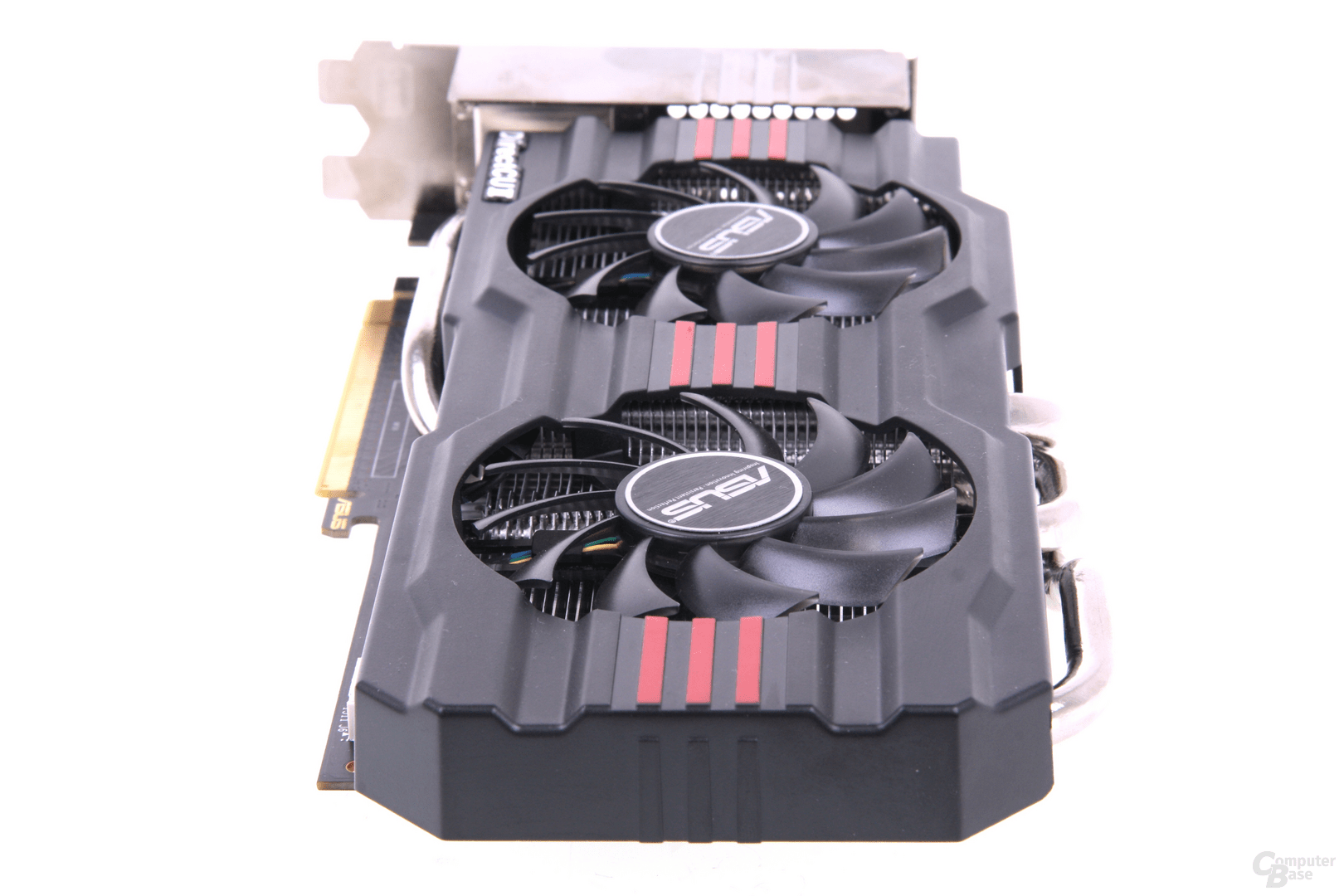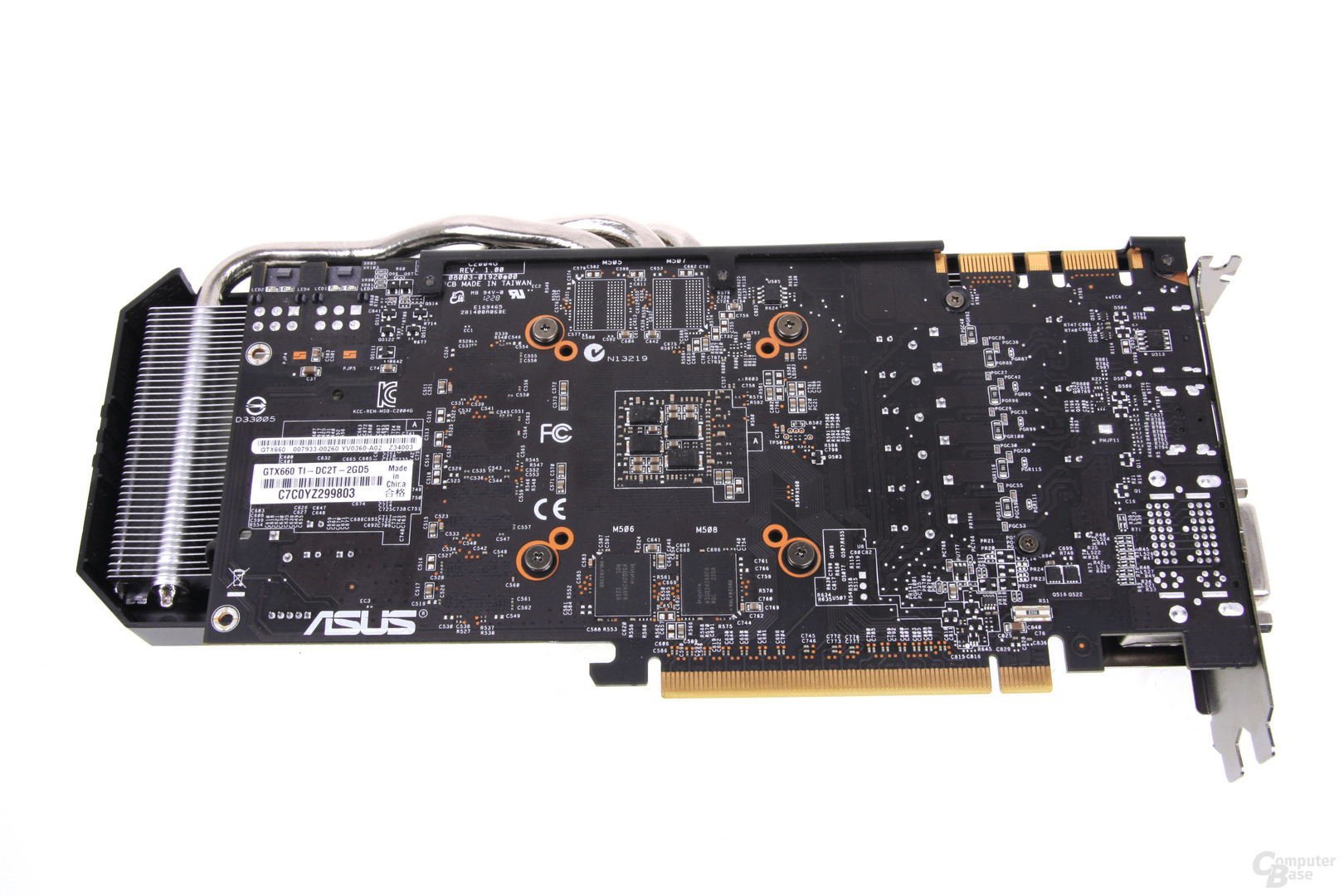Exactly 10 years ago today, Nvidia brought the new Kepler architecture with the 1,344 shader strong GeForce GTX 660 Ti (test) into the upper class and thus defeated those based on the GCN architecture and Pitcairn XT based Radeon HD 7870 and HD 7850 (test) from AMD in the psychologically important price segment around 300 euros.
GeForce GTX 660 Ti counters the Radeon HD 7870 and 7850
After Nvidia presented the Kepler architecture, named after the German astronomer, physicist and mathematician Johannes Kepler, in March 2012 with the GeForce GTX 680 (test) and in May with the GeForce GTX 670 (test) and the dual GPU Graphics card GeForce GTX 690 (test), the AMD Radeon HD 7950, 7870 and 7850 in the price segment around 300 euros should then be attacked.
GK104 with 1,344 shaders and 2 GB GDDR5
The AMD Radeon HD 7870 and HD 7850 also impressed in the upper class and Nvidia successfully countered with the GeForce GTX 660 Ti, which is also based on the large GK104 graphics processor, and the following specifications.
- GK104 graphics processor with 915 MHz chip clock
- 1,344 shaders with 915 MHz shader clock
- 980 MHz maximum boost clock
- 2 GB GDDR5 with 3,004 MHz
- 112 TMUs and 24 ROPs
- 192-bit memory IF
- ~ 2,459 GFLOPS
- 134 watt TDP
On August 16, 2012, ComputerBase welcomed the Asus GeForce GTX 660 Ti DirectCU II TOP with DirectCU II cooler and higher clock rates for testing in the editorial office and felt Nvidia's new top-class graphics card meticulously as usual.



Asus GeForce GTX 660 Ti DCII TOP
27.5 cm (card length) Power supply 2 x 6 pin cooler Design DirectCU II cooler, 2 slot heat sink aluminum core, aluminum radiator, 3 heat pipes Fan 2 x 75 mm (axial) Fan control Yes Clock
(power saving mode) GPU 1,059 (324 MHz) GPU Turbo 1,137 MHz Memory 3,004 MHz (324 MHz) memory size 2,048 MB GDDR5, Hynix connectors< /strong> 2 x dual-link DVI
1 x DisplayPort
1 x HDMI Scope of delivery Hardware 1 x power cable
1 x DVI on D-SUB software driver CD
The Gainward GeForce GTX 660 Ti Phantom, the KFA² GeForce GTX 660 Ti OC EX and the MSI GeForce GTX 660 Ti Power Edition OC and wanted to put AMD's current high-end GCN graphics cards in their place.
GeForce GTX 660 Ti was able to beat Radeon HD 7870
The plan was successful and the AMD Radeon HD On average, the Pitcairn-based 7870 was just beaten, while the AMD Radeon HD 7950 with its Tahiti GPU could only just hold its own against the Kepler upper class.
Rating
- 1920×1080 1xAA/1xAF
- 1920×1080 4xAA/16xAF
- 1920×1080 4xSSAA/16xAF
- 1920×1080 8xAA/16xAF
- 2560×1600 1xAA/1xAF
- 2560×1600 4xAA/16xAF
- 2560×1600 4xSSAA/16xAF
- 2560×1600 8xAA/16xAF
Rating – 1920×1080 1xAA/1xAF
-
- Nvidia GeForce GTX 690174,7
- Nvidia GeForce GTX 660 Ti SLI150.2
- AMD Radeon HD 7970 GHz129.9
- Nvidia GeForce GTX 680122.8
- AMD Radeon HD 7970118.7
- Nvidia GeForce GTX 670111.5
- AMD Radeon HD 7950100.8
- Nvidia GeForce GTX 660 Ti100.0
- Nvidia GeForce TX 660 Ti 3GB99.8
- AMD Radeon HD 787093.7< /li>
- Nvidia GeForce GTX 58092.1
- AMD Radeon HD 697083.4
- AMD Radeon HD 785078.0
- Nvidia GeForce GTX 560 Ti64,6
- AMD Radeon HD 687062,8
- AMD Radeon HD 777050,5
- AMD Radeon HD 775039.0
- AMD Radeon HD 675033.9
- Nvidia GeForce GTS 45031.9
Unit: Percent Rating – 1920×1080 4xAA/16xAF
-
- Nvidia GeForce GTX 690190,4
- Nvidia GeForce GTX 660 Ti SLI157,4
- AMD Radeon HD 7970 GHz131,0
< li class="chart__row">Nvidia GeForce GTX 680125.3
- AMD Radeon HD 7970118.1
- Nvidia GeForce GTX 670114.8< /li>
- Nvidia GeForce GTX 660 Ti100.0
- Nvidia GeForce TX 660 Ti 3GB99.8
- AMD Radeon HD 795099.5
- Nvidia GeForce GTX 58093.3
- AMD Radeon HD 787092.1
- AMD Radeon HD 697082.9
- AMD Radeon HD 785074.9
- Nvidia GeForce GTX 560 Ti64.9
- AMD Radeon HD 687058.1
- AMD Radeon HD 777049.2
- AMD Radeon HD 775037.5
- Nvidia GeForce GTS 45032.9
- AMD Radeon HD 675032.2
Unit: Percent Rating – 1920×1080 4xSSAA/16xAF
-
- Nvidia GeForce GTX 690184,8
- Nvidia GeForce GTX 660 Ti SLI157.6
- AMD Radeon HD 7970 GHz133.0
- Nvidia GeForce GTX 680121.4
- AMD Radeon HD 7970120,3
- Nvidia GeForce GTX 670109.2
- Nvidia GeForce GTX 660 Ti100.0
- Nvidia GeForce TX 660 Ti 3GB99.8
- AMD Radeon HD 795099.6
- AMD Radeon HD 787092.5
- Nvidia GeForce GTX 58088.7
- AMD Radeon HD 785073.9
- Nvidia GeForce GTX 560 Ti64.5
- AMD Radeon HD 777048.1
- AMD Radeon HD 775035.1
- Nvidia GeForce GTS 45032.6
Unit: Percent Rating – 1920×1080 8xAA/16xAF < ul class="chart__groups toggle-body-container" id="chart-groups-125998">
- Nvidia GeForce GTX 690187.1
- Nvidia GeForce GTX 660 Ti SLI149.4
- AMD Radeon HD 7970 GHz134.3
- Nvidia GeForce GTX 680125,5
- AMD Radeon HD 7970121,8
- Nvidia GeForce GTX 670117,4
- AMD Radeon HD 7950104.9
- Nvidia GeForce TX 660 Ti 3GB100.1
- Nvidia GeForce GTX 660 Ti100.0< /li>
- AMD Radeon HD 787098.7
- AMD Radeon HD 697091.7
- Nvidia GeForce GTX 58085.8
- AMD Radeon HD 785082.8
- Nvidia GeForce GTX 560 Ti68,8
- AMD Radeon HD 687065,7
- AMD Radeon HD 777052, 9
- AMD Radeon HD 775040,8
- AMD Radeon HD 675035,3
- Nvidia GeForce GTS 45034.5
Unit: Percent Rating – 2560×1600 1xAA/1xAF
-
- Nvidia GeForce GTX 690189.0
- Nvidia GeForce TX 660 Ti SLI154.7
- AMD Radeon HD 7970 GHz140.4
- AMD Radeon HD 7970127.7
- Nvidia GeForce GTX 680123.7< /li>
- Nvidia GeForce GTX 670111,7
- AMD Radeon HD 7950107,4
- Nvidia GeForce GTX 660 Ti100.0
- Nvidia GeForce TX 660 Ti 3GB99.8
- AMD Radeon HD 787096.6
- Nvidia GeForce GTX 58092.4
- AMD Radeon HD 697088.9
- AMD Radeon HD 785081.7
Unit: percent rating – 2560×1600 4xAA/16xAF
-
- Nvidia GeForce GTX 690202.9
- Nvidia GeForce TX 660 Ti SLI151.1
- AMD Radeon HD 7970 GHz142.6
- AMD Radeon HD 7970128.7
< li class="chart__row">Nvidia GeForce GTX 680127.1
- Nvidia GeForce GTX 670115.7
- AMD Radeon HD 7950107.9< /li>
- Nvidia GeForce TX 660 Ti 3GB100,9
- Nvidia GeForce GTX 660 Ti100,0
- AMD Radeon HD 787096.3
- Nvidia GeForce GTX 58095.7
- AMD Radeon HD 697088.0
- AMD Radeon HD 785077.8
Unit: Percent Rating – 2560×1600 4xSSAA/16xAF
-
- Nvidia GeForce GTX 690191,1
- Nvidia GeForce TX 660 Ti SLI159,9< /li>
- AMD Radeon HD 7970 GHz143.8
- AMD Radeon HD 7970131.0
- Nvidia GeForce GTX 680124.9
- Nvidia GeForce GTX 670111,8
- AMD Radeon HD 7950107,2
- Nvidia GeForce TX 660 Ti 3GB101,6< /li>
- Nvidia GeForce GTX 660 Ti100.0
- AMD Radeon HD 787093.8
- Nvidia GeForce GTX 58093.4
- AMD Radeon HD 785074.3
Unit: Percent Rating – 2560×1600 8xAA/16xAF
-
- Nvidia GeForce GTX 690191,8
- AMD Radeon HD 7970 GHz148,5
- Nvidia GeForce TX 660 Ti SLI144.1
- AMD Radeon HD 7970135.2
- Nvidia GeForce GTX 680128.6
- Nvidia GeForce GTX 670119,4
- AMD Radeon HD 7950113,9
- AMD Radeon HD 7870103,1
- Nvidia GeForce TX 660 Ti 3GB101,8
- Nvidia GeForce GTX 660 Ti100,0
- AMD Radeon HD 697098.6
- AMD Radeon HD 785087.1
- Nvidia GeForce GTX 58083.1
Unit: percent
The conclusion of the ComputerBase editors was corresponding, which ultimately had little to complain about the Nvidia GeForce GTX 660 Ti and in particular positively emphasized the cooling system of the GeForce GTX 660 Ti DirectCU II TOP.
The Kepler graphics cards will not exactly be cheap with the GeForce GTX 660 Ti, but the 300 euro limit is certainly a psychologically important threshold for many potential customers.< /p>
The performance is also exactly in the usual range for this price range. In the end, the GeForce GTX 660 Ti had to admit defeat against AMD's Radeon HD 7950.
However, the Nvidia card can assert itself against the Radeon HD 7870, even if the differences are generally quite small. There is something interesting to report in comparison to the GeForce GTX 670: The more anti-aliasing is used, the greater the difference – since anti-aliasing requires a lot of memory bandwidth.
ComputerBase, August 16, 2012
Nvidia GeForce GTX 660 Ti (general)
- Sometimes fast enough for 2560×1600
- AA/AF possible throughout
- Acceptable power consumption under load
- Good power consumption in relation to performance
- Good power consumption for Blu-ray playback and two-monitor operation
- Numerous partner cards available
- Partner cards not always recommended